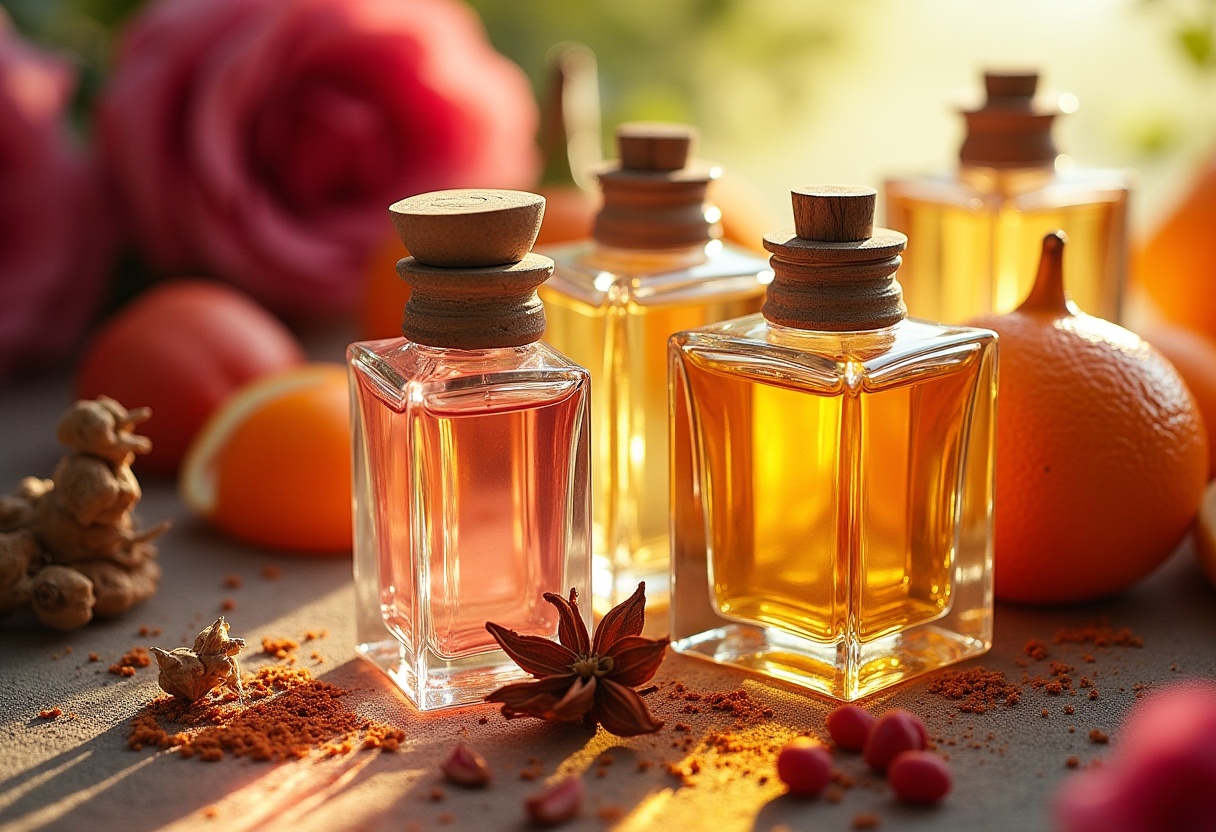Your cart is currently empty!
How Perfume Is Made: From Raw Ingredients to the Final Bottle

Every time you spritz your favorite fragrance, you’re experiencing the result of months — sometimes years — of careful formulation, blending, and refinement. But how exactly is perfume made? The process blends art, chemistry, and nature to craft a scent that tells a story and lingers in memory.
This behind-the-scenes look explores how perfume travels from raw materials to the luxurious glass bottles on your shelf.
1. Sourcing Raw Ingredients
Perfume begins with natural and synthetic aromatic ingredients. Natural sources include:
- Flowers: rose, jasmine, lavender, tuberose
- Woods: sandalwood, cedar, oud
- Spices: cinnamon, cardamom, clove
- Citrus: bergamot, lemon, orange
- Resins: frankincense, myrrh
- Animal-derived (less common today): musk, ambergris, civet
Today, many fragrances also use synthetic molecules to replicate rare scents, enhance longevity, or improve sustainability.
2. Extraction of Aromatic Oils
To capture scent from natural ingredients, perfumers use techniques such as:
- Steam Distillation: Common for essential oils like lavender and eucalyptus.
- Cold Pressing: Used for citrus rinds like orange or lemon.
- Solvent Extraction: Ideal for delicate flowers (e.g., jasmine) that don’t tolerate heat.
- Enfleurage (historical): An old technique using fat to absorb fragrance from petals.
The result is an essential oil or absolute — the building block of perfume.
3. Creating the Fragrance Formula
Master perfumers (known as “noses”) then combine ingredients into a carefully structured blend made of:
- Top Notes: The first impression (e.g., citrus, herbs) — lasts ~15 minutes
- Middle Notes: The heart of the fragrance (e.g., florals, spices) — lasts a few hours
- Base Notes: The foundation (e.g., woods, musk, vanilla) — lasts the longest
This blend is diluted with alcohol (usually ethanol) to achieve the desired fragrance concentration (e.g., Eau de Parfum, Eau de Toilette).
4. Maceration and Maturation
Once the perfume is blended, it’s not ready for market just yet. Like fine wine, it needs to mature:
- Maceration: The perfume rests for several weeks so the ingredients can fully merge and intensify.
- Filtration: After maturation, the perfume is filtered to remove impurities or particles, leaving a clear, stable solution.
5. Bottling and Packaging
After quality testing, the final fragrance is filled into glass bottles — sometimes by machine, sometimes by hand for luxury lines. Branding, labels, and box packaging are added before the product reaches shelves.
Fun fact: Some niche perfumers hand-pour and label each bottle for authenticity and exclusivity.
Sustainability in Perfume Production
Modern perfumers are increasingly focused on ethical sourcing, biodegradable packaging, and cruelty-free practices. Many brands now highlight whether they use vegan ingredients, sustainable harvesting, or recyclable packaging.
From Nose to Nostalgia
Creating perfume is part chemistry, part creativity. Every scent is a formula — but also a memory in the making. The next time you apply a fragrance, remember: you’re wearing the result of global harvesting, scientific precision, and artistic vision.
Final Thoughts
Perfume isn’t just a product — it’s a process. Knowing how your scent is made brings a new level of appreciation to the bottle on your vanity.
Next in our Plenty Scents series:
Top Mistakes People Make When Wearing Perfume (And How to Fix Them) →
Leave a Reply
You must be logged in to post a comment.